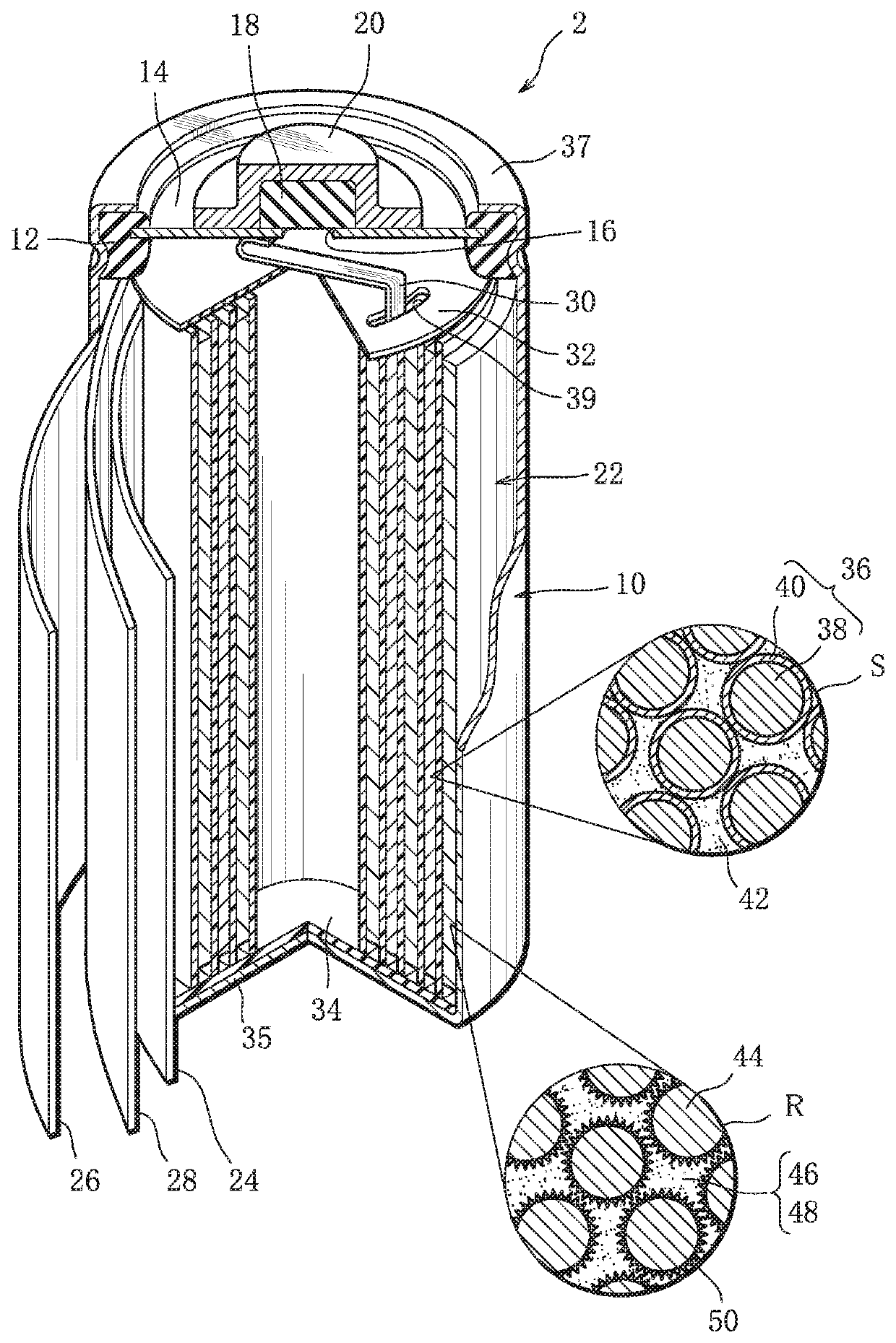Nickel hydrogen secondary battery
a secondary battery and hydrogen hydrogen technology, applied in the field ofnickel hydrogen secondary batteries, can solve the problems of reducing the conductivity of the positive electrode, the inability to achieve the function and the gradual reduction of the capacity of the battery, so as to prevent the destruction of the conductive network and improve the cycle life of the battery. , the effect of suppressing the corrosion reaction of the hydrogen storage alloy
- Summary
- Abstract
- Description
- Claims
- Application Information
AI Technical Summary
Benefits of technology
Problems solved by technology
Method used
Image
Examples
example 1
1. Manufacturing of Battery
(1) Manufacturing of Positive Electrode
[0076]Nickel sulfate, zinc sulfate, and cobalt sulfate were weighed to obtain 3 mass % zinc and 1 mass % cobalt relative to nickel, and these substances were added to 1 N sodium hydroxide aqueous solution containing ammonium ions so as to prepare a mixed aqueous solution. While the mixed aqueous solution obtained was agitated, 10 N sodium hydroxide aqueous solution was gradually added to the mixed aqueous solution to cause a reaction. During the reaction, the pH was stabilized at 13 to 14, so that base particles 38 composed mainly of nickel hydroxide with solid-dissolved zinc and cobalt were formed.
[0077]The base particles 38 obtained were washed with 10 times the amount of pure water three times, and then dehydrated and dried. The base particles 38 had a spherical shape with an average particle diameter of 10 μm.
[0078]Subsequently, the base particles 38 obtained were injected into an ammonia aqueous solution. While t...
examples 2 to 3
[0090]Except that the time for immersing the hydrogen storage alloy particles in a potassium hydroxide aqueous solution was appropriately changed to have a specific surface area of the hydrogen storage alloy particles of 0.1 m2 / g or 0.5 m2 / g, a nickel hydrogen secondary battery was obtained in the same manner as in Example 1.
examples 4 to 5
[0091]Except that the concentration of the lithium hydroxide aqueous solution to be sprayed to the intermediate particles for use in the positive electrode was appropriately changed to have a LiOH mass per unit capacity of the positive electrode contained in the battery of 15 mg / Ah or 50 mg / Ah, a nickel hydrogen secondary battery was obtained in the same manner as in Example 1.
PUM
| Property | Measurement | Unit |
|---|---|---|
| specific surface area | aaaaa | aaaaa |
| particle diameter | aaaaa | aaaaa |
| particle diameter | aaaaa | aaaaa |
Abstract
Description
Claims
Application Information
 Login to View More
Login to View More - R&D
- Intellectual Property
- Life Sciences
- Materials
- Tech Scout
- Unparalleled Data Quality
- Higher Quality Content
- 60% Fewer Hallucinations
Browse by: Latest US Patents, China's latest patents, Technical Efficacy Thesaurus, Application Domain, Technology Topic, Popular Technical Reports.
© 2025 PatSnap. All rights reserved.Legal|Privacy policy|Modern Slavery Act Transparency Statement|Sitemap|About US| Contact US: help@patsnap.com

